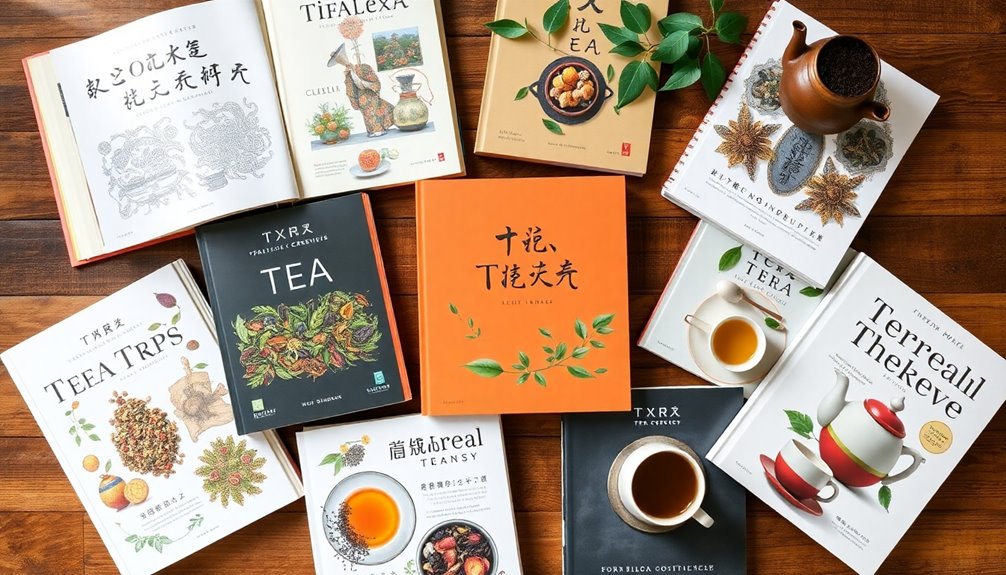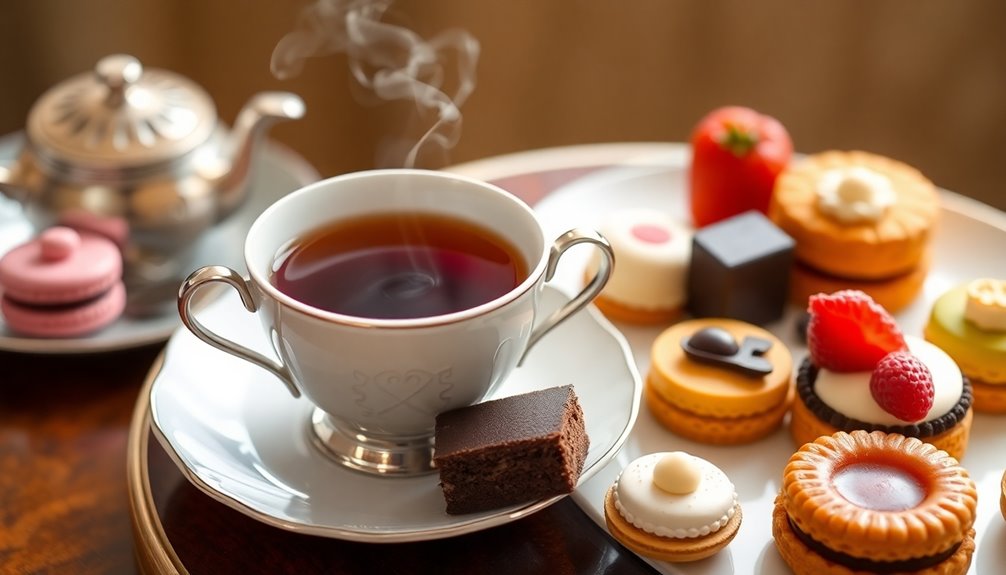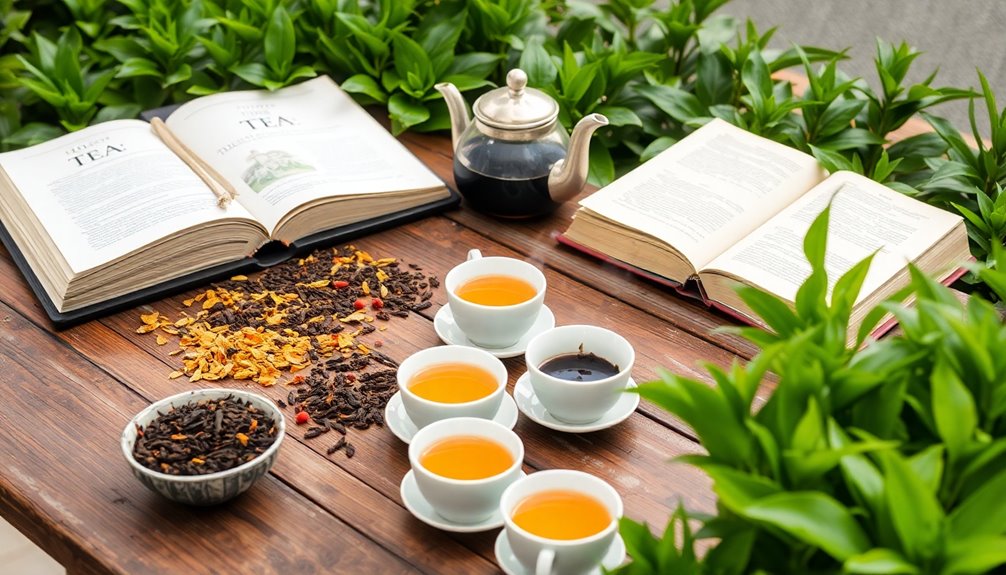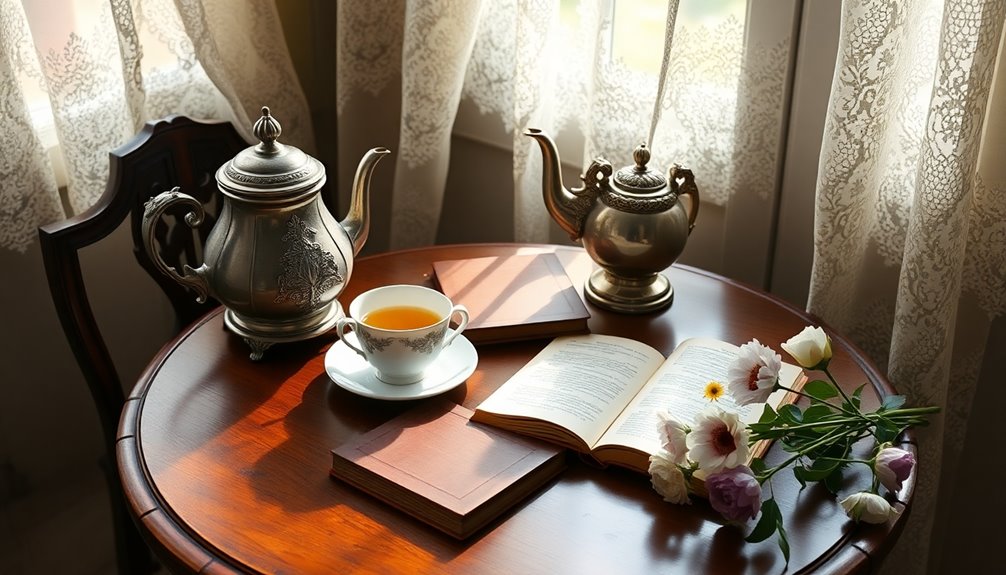You can deepen your appreciation of global tea traditions through stunning books that highlight the rich history and diverse customs surrounding tea. From the mindful Japanese tea ceremonies to the communal joys of Indian chai culture, these books provide a vibrant snapshot of how tea shapes identities and fosters connections. You'll discover unique recipes alongside breathtaking photography, making your journey even more engaging. Plus, these works discuss the role of tea in diplomacy and the complexities of cultural appropriation, enriching your understanding. Keep exploring to uncover even more fascinating insights into the world of tea.
Key Takeaways
- "The World in Your Teacup" showcases diverse global tea traditions, featuring recipes and stunning photography that enhance the cultural experience.
- The book explores the historical significance of tea, tracing its origins from China to its influence in 16th-century Europe.
- It highlights unique practices like the Japanese tea ceremony and British afternoon tea, emphasizing their cultural contexts and social importance.
- Readers will discover current trends in tea consumption, including the rise of wellness-oriented herbal teas and specialty tea sales in North America.
- The text addresses cultural appropriation issues, urging readers to engage authentically with tea traditions while understanding their origins and significance.
Introduction
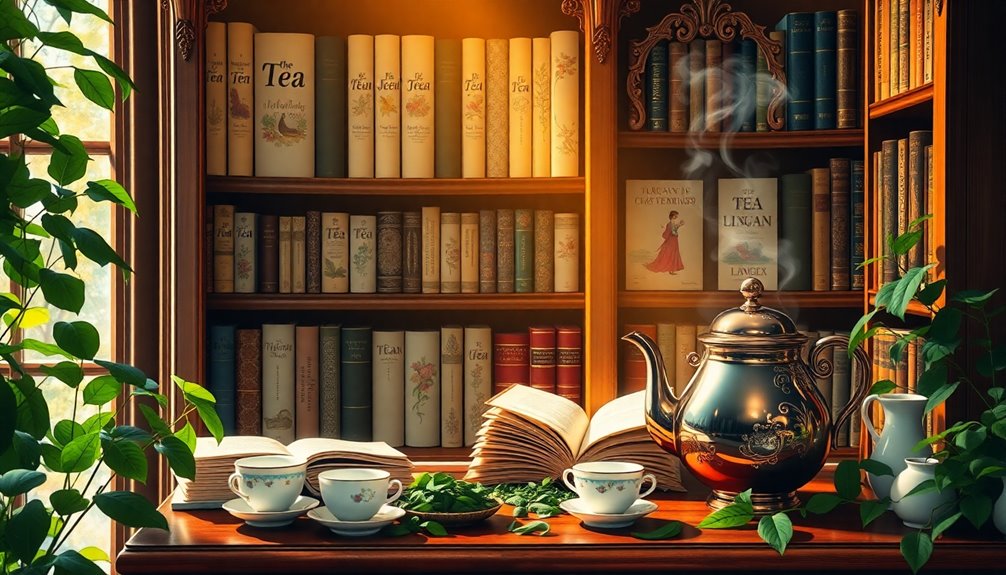
When it comes to tea, there's a world of traditions waiting to be explored. You might find that tea isn't just a drink; it's a cultural experience that spans the globe. A fantastic way to dive into this rich world is through books like "The World in Your Teacup."
This treasure trove compiles fascinating tea traditions from countries such as China, England, and Morocco, revealing how tea we've come to love is woven into the fabric of various cultures.
You'll discover delicious recipes like Couscous Chicken from Morocco and Apple Tart from France, showcasing the culinary ties that tea shares with global cuisines. Stunning photography captures the essence of these traditions, making it not only an educational resource but also a visually captivating coffee table book.
As you read, you'll learn about the historical significance of tea, tracing its introduction to Europe in the 16th century and its profound impact on global economies.
Most importantly, you'll appreciate how communal tea rituals foster connections and hospitality, highlighting the importance of sharing this beloved beverage among family and friends.
Diverse Tea Cultures Worldwide
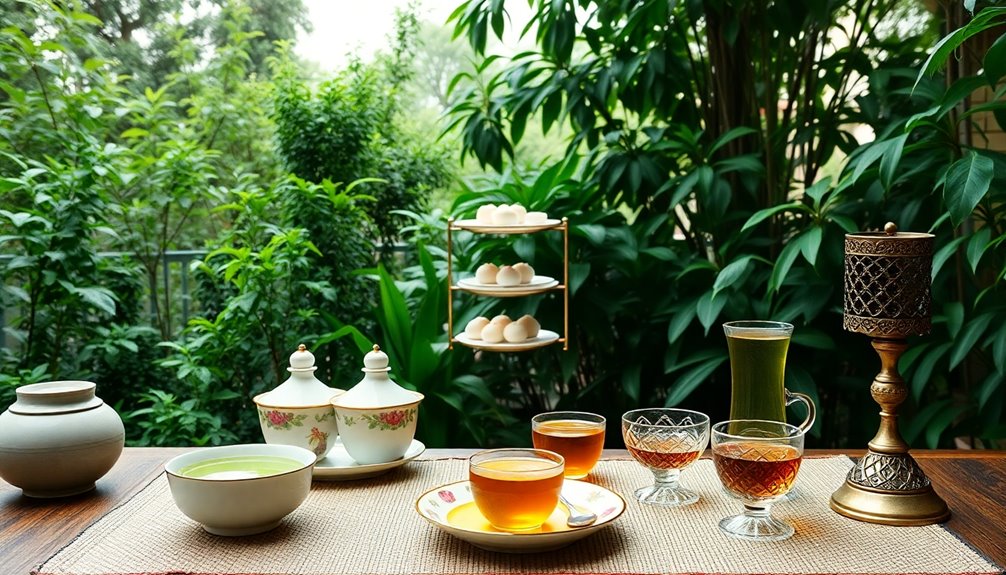
Exploring diverse tea cultures worldwide reveals how this beloved beverage shapes social interactions and rituals across different societies.
The history of tea dates back to China around 2737 BC, but its impact spans tea-producing countries, each with unique tea traditions. In Japan, the tea ceremony, or "chanoyu," emphasizes mindfulness, turning tea drinking into a profound ritual that reflects respect and aesthetic beauty.
Meanwhile, the British Empire popularized afternoon tea in the 19th century, creating a delightful social custom where friends gather to enjoy tea alongside light refreshments.
In India, chai culture blends tea with spices and milk, resulting in a rich, flavorful drink that's central to daily life and serves as a warm invitation for conversation.
In Middle Eastern countries, hospitality shines through tea traditions, where serving tea is a cherished ritual that fosters connection and camaraderie. Furthermore, understanding the traditional tea ceremony can enhance one's appreciation for the cultural significance of tea rituals around the world.
Each of these diverse tea cultures showcases how tea isn't just a beverage; it's a vital part of cultural history and social fabric, steeped in rituals that bring people together, reflecting values of mindfulness and hospitality.
Global Tea Consumption Trends
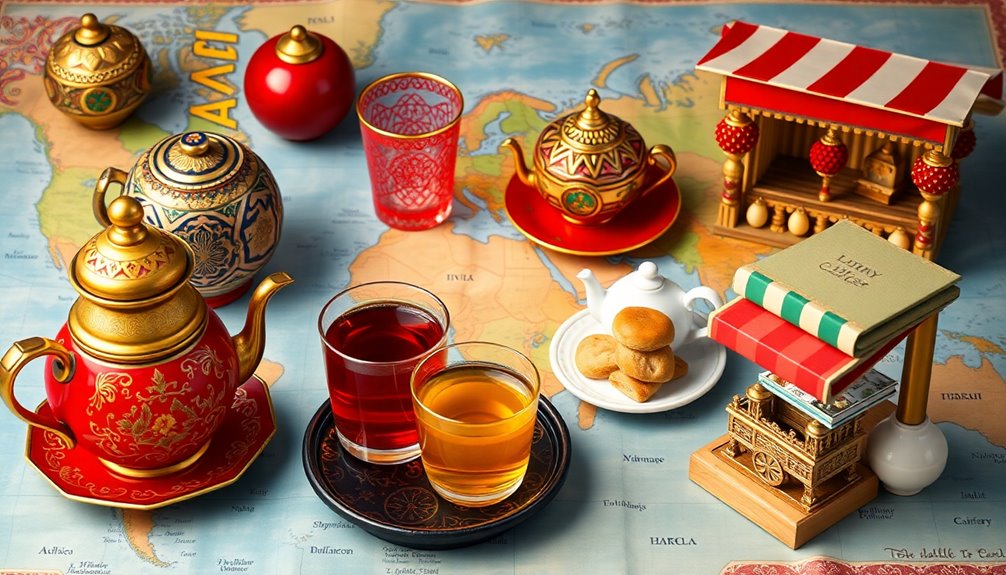
As global tea consumption continues to rise, the beverage's appeal is evident in the growing demand for specialty and premium varieties. In 2021, the world consumed about 6.3 million metric tons of tea, with the Asia-Pacific region, especially China and India, accounting for over 70% of this figure.
However, North America is catching up, as specialty tea sales surged by 24% from 2020 to 2021. This trend highlights your interest in diverse tea varieties and innovative brewing methods.
Health benefits also play a significant role in this growing market. The rise of wellness-oriented products, including herbal tea, showcases a shift towards health-conscious consumer behavior. People are increasingly drawn to herbal blends that promise not just flavor but also functional advantages. Additionally, many consumers are turning to herbal teas for their health benefits, such as aiding digestion and promoting relaxation.
Moreover, ready-to-drink tea options are booming, with a projected growth rate of 6.5% from 2021 to 2028, driven by the convenience of on-the-go consumption.
This trend reflects a broader tea culture evolving to meet modern lifestyles, ensuring that you can enjoy your favorite beverage anytime, anywhere.
Tea's Role in Diplomacy
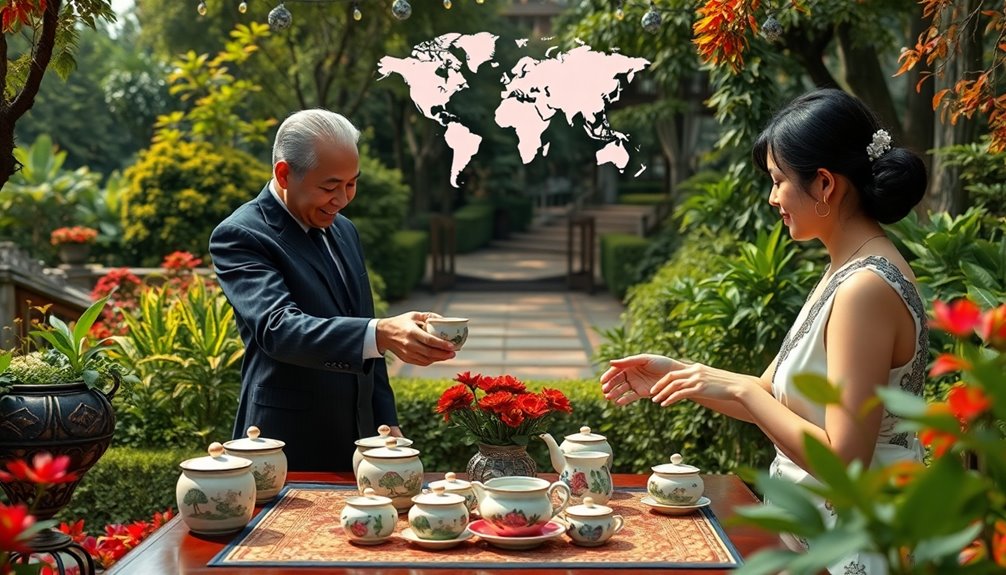
Tea has long been more than just a beloved beverage; it's served as a powerful diplomatic tool throughout history. The role of tea in diplomacy is evident in events like the Boston Tea Party of 1773, which showcased its influence on political relations between Britain and America, ultimately fueling the American Revolution.
In China, tea culture embodies respect and hospitality, where offering tea to foreign dignitaries signifies goodwill and strengthens international relations.
During the 17th and 18th centuries, the British East India Company's control over the tea trade highlighted how tea was intertwined with colonial diplomacy, affecting trade agreements.
Fast forward to the Cold War, when countries like China used tea diplomacy to strengthen ties with developing nations, promoting tea culture as a form of soft power.
Japan's intricate tea ceremony serves not just as a cultural ritual but also as a diplomatic medium, emphasizing harmony and respect during formal interactions between leaders.
Cultural Appropriation in Tea Practices

While tea has played a significant role in diplomacy and cultural exchanges, it's also important to recognize the complexities of cultural appropriation in tea practices. When elements of tea traditions are adopted without an understanding of their origins and significance, it can lead to commodification and a dilution of meaning.
Take the Japanese tea ceremony, known as "Chanoyu," for instance; its emphasis on mindfulness and respect may be lost when adapted by those unfamiliar with its cultural context.
In Western cultures, the trend of afternoon tea often overlooks the rich history and social rituals that accompany tea drinking, especially in England, where it's been a significant social event since the 19th century.
Merging different tea practices, like blending chai spices with English breakfast tea, could be seen as cultural fusion or appropriation, depending on your intent and understanding.
To foster authentic engagement with diverse tea practices, it's crucial to appreciate the origins and cultural significance behind each tradition.
Practical Applications
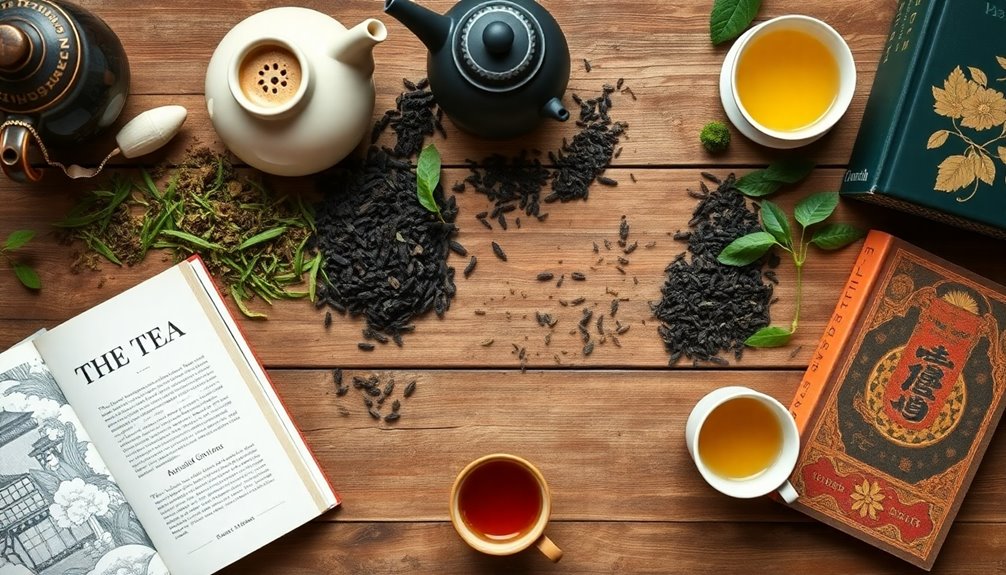
Exploring practical applications of tea can elevate your culinary experience and deepen your appreciation for its diverse traditions. Books like "The World in Your Teacup" and "Culinary Tea" showcase the versatility of tea through innovative recipes and culinary applications. You can try dishes such as Couscous Chicken from Morocco or an Apple Tart from France, immersing yourself in global tea traditions while expanding your cooking skills.
These books provide clear brewing instructions and tasting tips, ensuring you understand the importance of water temperature and steeping times for optimal flavor. With over 150 recipes featuring tea, "Culinary Tea" highlights how you can incorporate this ingredient into various meals, enhancing both flavor and nutrition.
Participating in community events and tea festivals allows you to engage with fellow tea enthusiasts, fostering connections and cultural appreciation. These gatherings often feature hands-on experiences where you can practice brewing techniques and learn about diverse tea traditions.
Conclusion
As you explore these stunning books, you'll uncover the rich tapestry of global tea traditions. Each culture offers unique practices and stories that deepen your appreciation for this beloved beverage. By understanding tea's role in diplomacy and the nuances of cultural appropriation, you can enjoy your own tea rituals while respecting their origins. So pour a cup, dive into these reads, and let the world of tea inspire your own journey.

